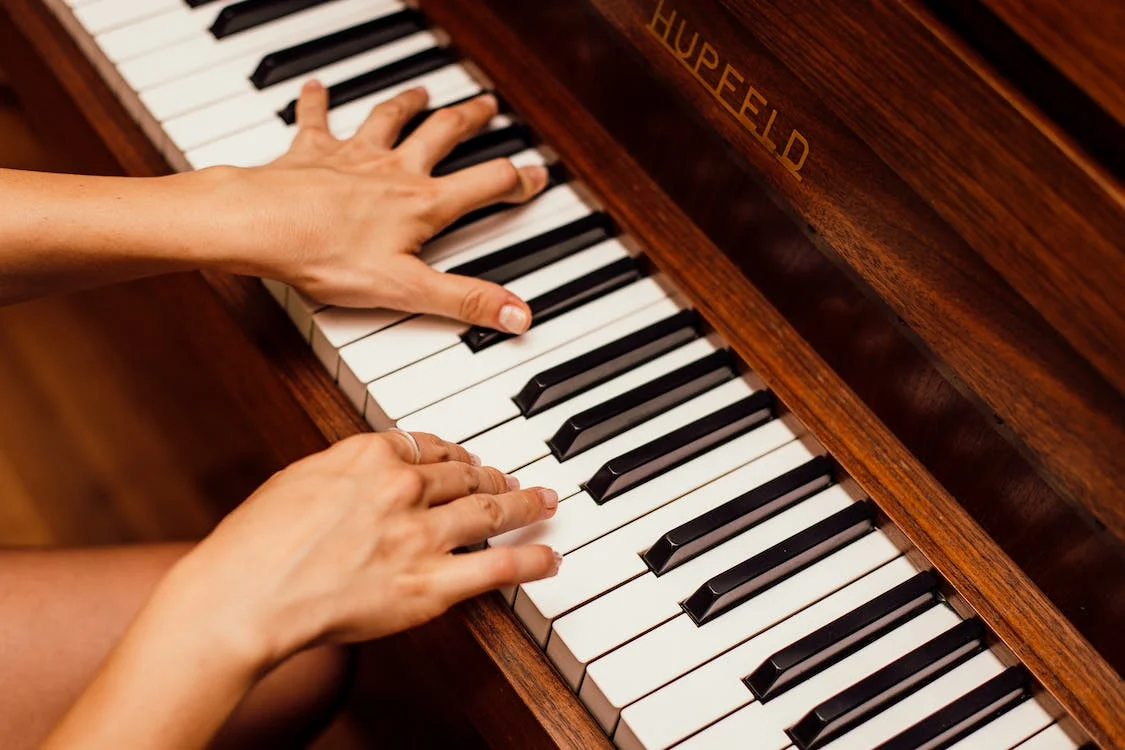The clavichord is a rectangular keyboard instrument that was invented in the 14th century. Back then, in the year 1502, the earliest reference of the clavichord occurs in the purse expenses of Elizabeth of York, the first queen consort of England of the Tudor dynasty. According to the researcher, a stranger delivered the queen a ‘payre of clavyvordes.’
The name clavichord was said to originate from the Latin word ‘clavis,’ which means rod or nail, and ‘chorda,’ meaning a string of a musical instrument.Aside from that, several other names were also called to the clavichord. Some of those are ‘manicorde,’ manicordion,’ and ‘manucordio, which are derived from the Latin word ‘manus,’ meaning hand. Moreover, some of its names originated and referred to the instrument’s mono-chord-nature. These names were monacordio (Spanish) and monacordo (Italian). Italians also used the word ‘sordino’ to refer to the instrument’s quite sound.
The clavichord produces sound by striking the iron or brass strings with small blades made of a metal called a tangent. This process can be done by simply pressing down the key of the instrument. With this, the end of the key inside the clavichord comes up. These tangents remain on the string until the player takes his finger off the keys. Vibrations that are produced are transmitted through the bridges to the soundboard.
The clavichord is a very quiet chordophone instrument. Thus, it was not suitable to play alongside other instruments. However, it sounds beautiful in its own expressive and slow music. The clavichord was primarily used from the Middle Age through the Renaissance, Classical, and Baroque era. Although the said instrument was quite popular back then, it was not loud enough to be played in a larger venue of performance. According to history, the clavichords were mostly used as an aid to composition or practice instrument.
From the 16th to the 18th century, the clavichord became very popular. However, the notability of this instrument mainly flourished in German-speaking lands, Iberian Peninsula, and Scandinavia. By the year 1850, the clavichord faced its decline but was later revived forty years after. It was Arnold Dolmetsch who had revived this stringed instrument. Dolmetsch, with the help of a British keyboard player named Violet Gordon-Woodhouse and several others, once again popularized the clavichord.
In the 1730s, the clavichords that existed were only about four feet long and had four octaves. These versions of clavichords were so small that it could be lifted up and put into a table. They could be placed on top of each other so that an organist could use the instrument in playing music that is written for a two-manual organ. Sometimes, they also have pedals to practice. Nevertheless, the latest version of the said instrument was built about seven feet long with a six-octave range.
As the 20th-century approaches, electronic amplification made it possible for the clavichord to be played in a large room. Before the electronic amplification, the clavichord was impossible to use in a large space. Today, music enthusiasts of Baroque, Renaissance and classical music primarily played the clavichord. As well as that, the instrument also attracts interested buyers worldwide and is manufactured around the world. Interestingly, the clavichord is used in about 400 recordings that were made in the past seventy years. Several clavichord societies were also found worldwide. Some musicologists that use the clavichord are Thurston Dart and Christopher Hogwood.
Subsequently, the clavichord has gained attention in several other genres of music in the form of clavinet, an electrically amplified clavichord. One of the musicians that played the clavichord was Stevie Wonder, who uses it in his ‘Higher Ground’ and ‘Superstition’ songs. Guy Sigsworth, a British record producer, has also played the clavichord in the modern setting along with an Icelandic singer, Bjork. Additionally, Bjork, herself, had played the instrument on her song, ‘My Juvenile,’ on her 2007 Volta album.
Tori Amos, an American singer-songwriter, had also played the clavichord on her song ‘Little Amsterdam’ from her American Doll Posse album of 2007. Previously, in 2004, Amos featured her clavinet on her recording of ‘Not David Bowie,’ which was released in her A Piano: The Collection 2006 box set.

